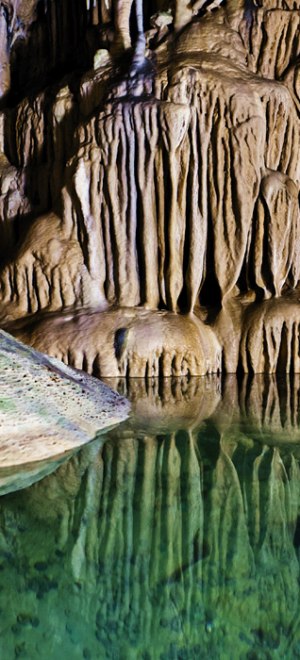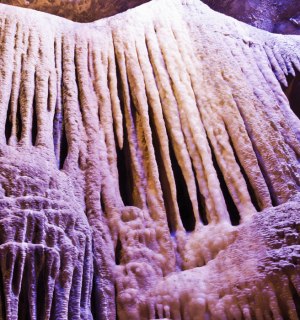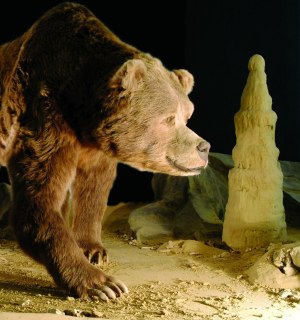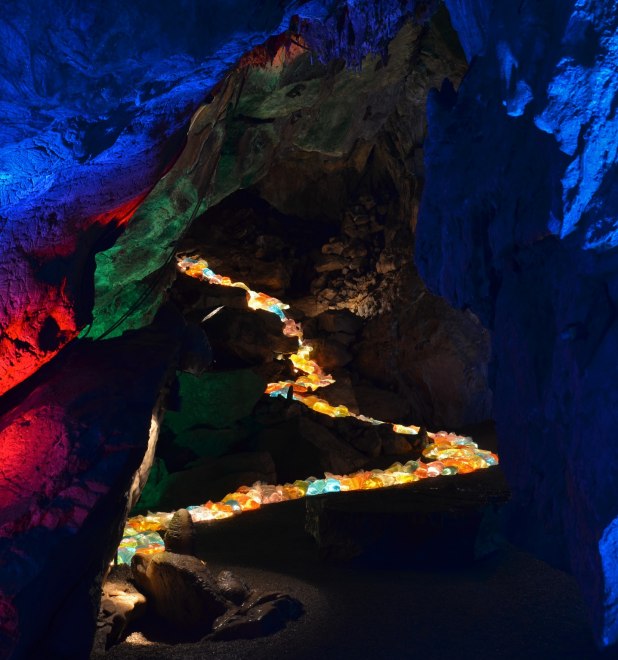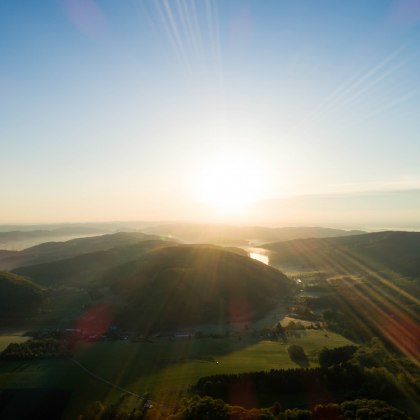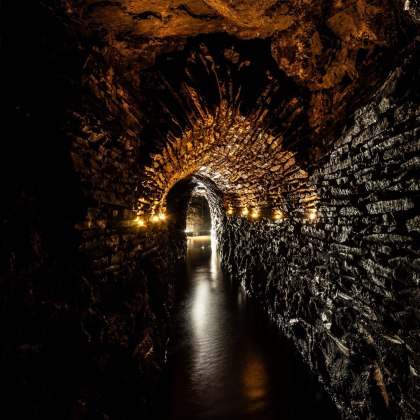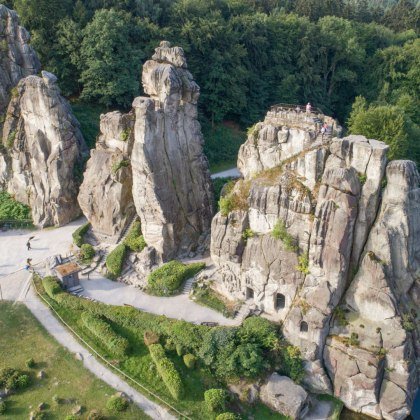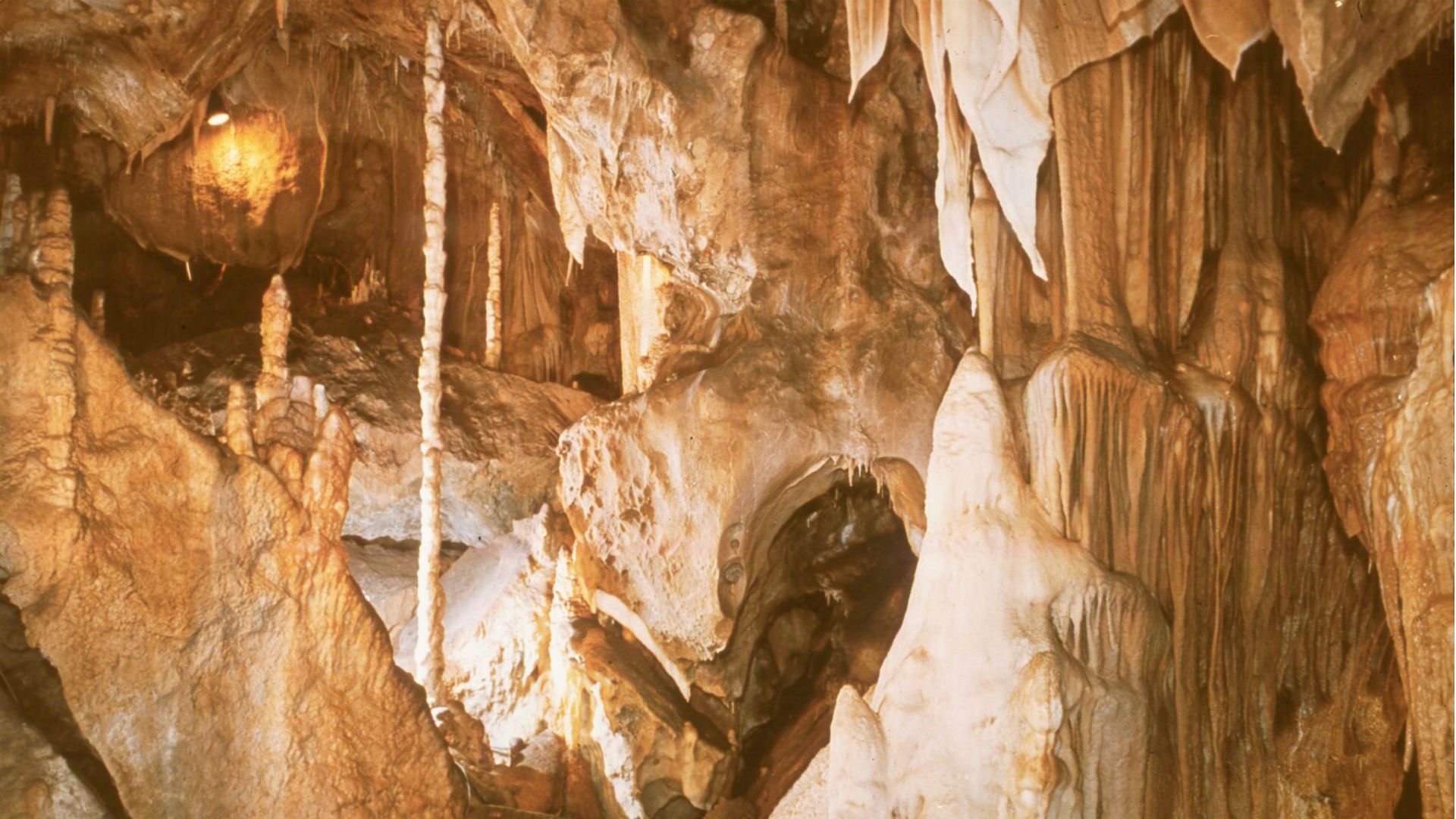
In the summer of 1907, the sight that greeted the quarrymen in Sauerland once the dust from the rock blasting had cleared took their breath away: a labyrinth of stalagmites and stalactites glistening in the darkness like curtains of stone, as artistically formed as the work of any sculptor. Quite by chance, the quarriers had uncovered the entrance to the incredible Atta Cave, formed several millions of years ago but never before seen by human eyes. This palace of stone was later named after Princess Atta, who also gave her name to the nearby Hanseatic town of Attendorn.
Visitors can follow a 1.8-kilometre-long path to marvel at this mysterious underworld, where the temperature remains at a constant 9 C. Isolated from wind and rain, subterranean visitors can pause and listen to the endless dripping of water, which causes the formations to grow by as little as one millimetre every ten years. It is admittedly hard to get a quiet moment in Atta Cave nowadays, given that it attracts between 150,000 and 200,000 visitors annually. All come to experience what is rightfully believed to be Germany’s largest and most beautiful show cave.
Away from the large crowds, a special area has been created so that visitors can experience the true tranquillity of the cave. Guests of the “health grotto” can relax on loungers, enjoy the atmospheric lighting and breathe in the pure air of the cave, which is tainted neither by dust, germs, pollen or ozone. The constant temperature of 9 C and constant humidity of 95 percent aid invigorating and deep breathing. Furthermore, the natural stone filter of Atta Cave ensures that the air is purer than coastal or mountain climates. People suffering from bronchial disorders, allergies or stress can find the air of the grotto beneficial and even healing. The special climate of the cave is also said to improve the flavour of cheese. The Atta cheese ripens for around three months in the cave air, which supposedly gives it its piquant taste. Visitors can of course sample the cheese at the shop on site.
Visiting the cave bears at Dechen Cave
Dechen Cave in Iserlohn was open to visitors long before Atta Cave. Discovered in 1868 during rock stabilisation work for a new railway line, it started to attract adventurous day-trippers more or less straight away. The highlight of this cave in the north of Sauerland was and still is the “hall of the emperor”, which visitors reach after passing the “organ grotto”, the “frozen waterfall”, the magical green-shimmering “pool of the mermaids” and the “palm tree”. The majestic stone waterfall, which appears to have been petrified in full flow – is a sight which seems to transfix some visitors, awestruck by the power of nature.
Dechen Cave offers so much more than the chance to marvel at the fantastic stone formations, however. It is also known for its animal bone discoveries. At the Deutsches Höhlenmuseum (German Cave Museum), visitors can see lifelike models of a cave lion, a cave bear and a cave bear cub, the skeleton of which was found in the cave itself. Other exhibits at the museum include tools from the Neanderthal era, and visitors can also learn about how caves are formed and about the geological history of the earth. The creatures found in Dechen Cave in the present day are another draw for visitors, for example the blind cave fish which can be viewed in the aquarium.
Even today, almost 150 years after the discovery of Dechen Cave, the dark labyrinthine world has lost none of its mystery. Every year, cavers discover new and previously unknown passages. Ordinary visitors can experience the cave on a 40-minute guided tour of the accessible and lit passageways. Special arrangements for children’s birthdays, concerts or candle-lit tours provide different, magical ways to experience the dark underground realm. And like Atta Cave, Dechen Cave has its own culinary speciality. The Dechenhöhlenstollen, a “Dresden-style” Christmas stollen, is matured in the cave for four weeks, which is said to give the cake its distinctive flavour.

